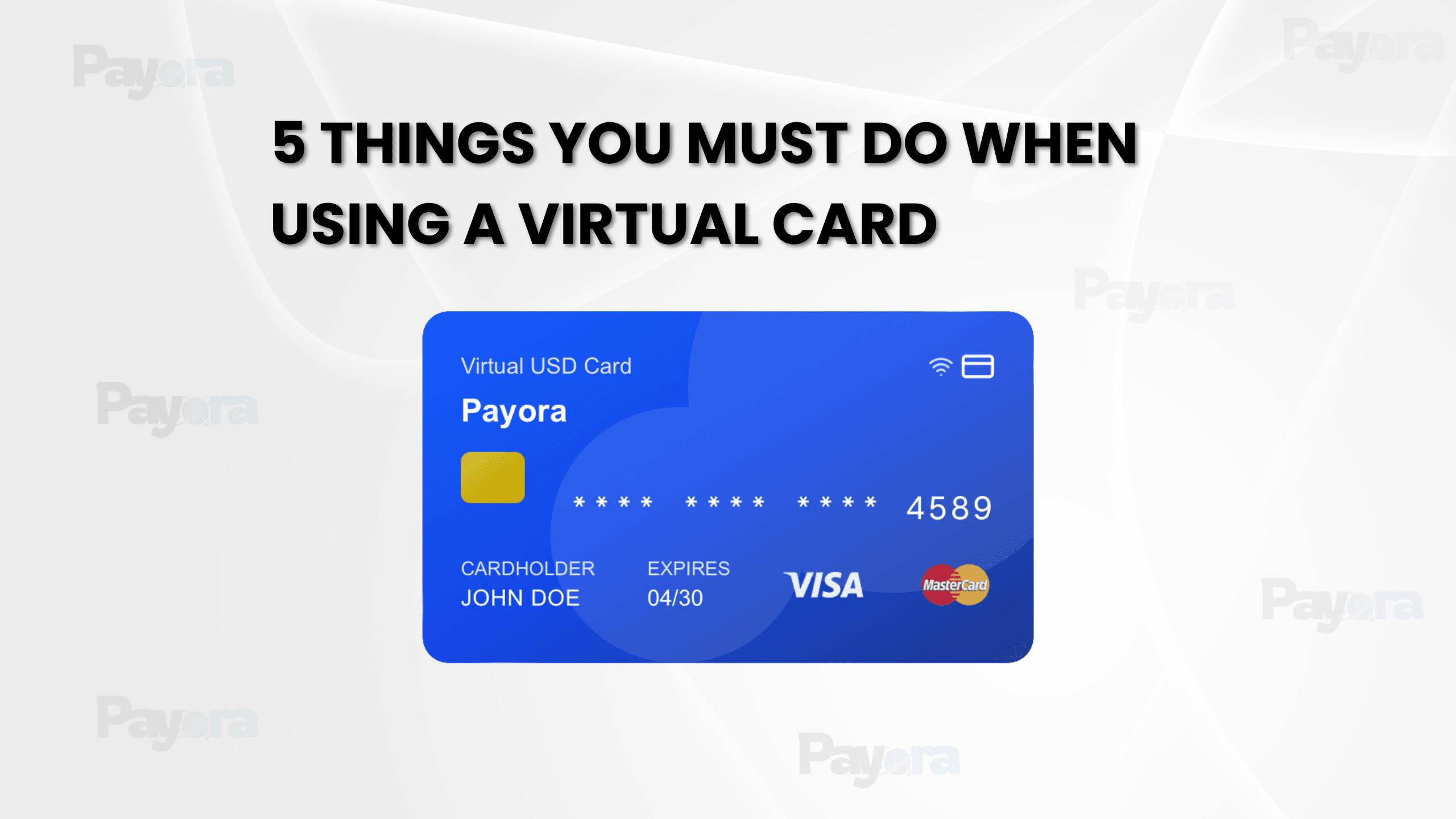In today’s world, online shopping, bill payments, and subscriptions are part of daily life. However, with these conveniences come the risks of fraud, failed transactions, and unexpected charges. That’s where virtual cards come in, they’re one of the safest tools for making payments online, especially in Nigeria, where card fraud is a growing concern.
A virtual card is a digital version of your debit or credit card. It has a unique card number, CVV, and expiry date, but it exists entirely online. This means you can use it to make payments without exposing your main bank account details. However, just like with any financial tool, using a virtual card carelessly can still put you at risk. If you want to enjoy the security and convenience a virtual card offers, there are certain mistakes you must avoid. Let’s break them down.
1. Never Share Your Virtual Card Details Carelessly
This might sound obvious, but you’d be surprised how many people send their virtual card number, CVV, and expiry date over WhatsApp or to a random seller without thinking twice. The same rules that apply to physical cards apply to virtual cards- someone has your details, they can spend your money. Scammers are smart; they can pretend to be customer service agents, delivery personnel, or even people you trust.
Example: Imagine you’re paying for a Netflix subscription and a “support agent” asks for your full card details to “help you activate it.” That’s a red flag. No genuine company will ever need you to read out your full card number. Safer Practice:
Always type your virtual card details directly into the secure payment page yourself. If you must share it with a trusted person, ensure it’s over a secure, private channel, and preferably create a fresh virtual card for that specific purpose.
2. Never Use One Virtual Card for All Transactions Forever
The beauty of virtual cards is that you can create and delete them whenever you want. Using the same one for every payment over months or years increases your exposure. If one website is hacked, your card could be compromised everywhere else you’ve used it.
Example: Let’s say you use your virtual card for paying utility bills, shopping on foreign websites, and subscribing to multiple streaming platforms. If one of those sites suffers a data breach, hackers could try your card details on the others. Safer Practice:
Create different virtual cards for different purposes. This way, if one card is compromised, it won’t affect your other payments. For instance:
- One for subscriptions like Netflix or Spotify.
- One for online shopping.
- One for one-off payments.
3. Never Leave Large Unused Balances Sitting on Your Virtual Card
One major mistake people make is loading huge amounts of money onto a virtual card and leaving it there for weeks. If someone gets access to your card details, they could spend that entire amount before you notice.
Example: You top up ₦200,000 for future online shopping, but you don’t buy anything for days. During that time, a cybercriminal gets hold of your details from a leaked database and makes purchases worth ₦180,000 before you can block the card.
Safer Practice:
Only fund your virtual card with the amount you need for a specific transaction. If you’re shopping for ₦15,000 worth of items, load exactly ₦15,000 or slightly more to cover fees.
4. Never Ignore Transaction Notifications
Your bank or virtual card provider sends alerts for a reason. Many people see payment alerts they don’t understand and think, “I’ll check it later.” By the time they do, the scammer has made several more transactions.
Example: You’re busy at work and you see a ₦5,000 debit from an unfamiliar merchant. You ignore it because you assume it’s a subscription renewal. Two hours later, ₦50,000 more is gone.
Safer Practice:
The moment you see a suspicious transaction, block your virtual card immediately. Then contact your provider’s customer support to investigate.
5. Never Use Virtual Cards on Unsecured or Shady Websites
Some websites have poor security or are outright scams. Using your virtual card is like giving your details to a thief. Even if the site delivers your goods, your details could be stored and sold on the dark web.
Example: A store you found on social media promises “designer sneakers” for 70% off. The website looks amateurish, there’s no SSL lock icon in the address bar, and reviews are suspiciously perfect. You pay with your virtual card, get nothing, and now your details are in the wrong hands.
Safer Practice:
Before making a payment:
- Check if the website starts with https:// (the “s” means secure).
- Read reviews from genuine sources.
- Look for clear return and contact policies.
Why Virtual Cards Remain the Smart Choice
Even with these risks, virtual cards are still one of the best payment tools for Nigerians who shop or pay bills online. They give you:
- Better control: Fund only what you need.
- Quick replacement: Delete and create new ones instantly.
- Security: Your main bank account stays hidden.
With a reliable provider, you can enjoy peace of mind knowing you have extra protection for your money. That’s why platforms like Payora make it easy to create multiple virtual cards, fund them instantly, and block them at any time, all from your phone.
The key is to combine these features with smart habits, so you’re not only using the right tool but using it the right way.
In Conclusion
Virtual cards are powerful tools for secure payments, but only if you use them wisely. By avoiding these five mistakes, you reduce your risk of fraud, overspending, and unwanted charges. Remember: security starts with you.
The next time you’re making an online payment, think of your virtual card as a shield, but a shield is only effective if you hold it properly.


